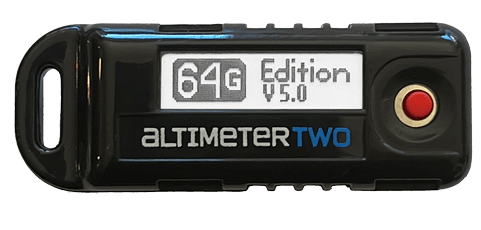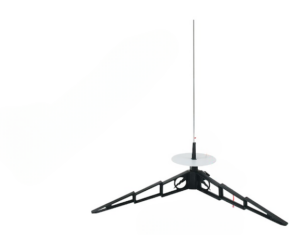
Model rocketry is a fascinating and interesting hobby that allows rocket enthusiasts of all ages to experience launching and flying model rockets. Rocketry combines elements of science, engineering, and a bit of creativity, making it popular for students, hobbyists, and space enthusiasts. So what is a model rocket accelerometer?
A model rocket accelerometer is a sensor used to measure the rocket’s acceleration during flight. It is an important component in many model rocketry. As it provides valuable data that helps rocket enthusiasts and engineers understand the performance and behavior of their rockets.
In this post, we will go through what is a model rocket accelerometer. Let’s get started!
What Is A Model Rocket Accelerometer?
A model rocket accelerometer is a sensor used to measure the rocket’s acceleration during flight. It is a crucial component in many model rocketry applications, as it provides valuable data that helps rocket enthusiasts and engineers understand the performance and behavior of their rockets.
The accelerometer typically consists of a microelectromechanical system (MEMS) sensor that can detect changes in acceleration along three axes: X, Y, and Z.
These sensors are capable of measuring both positive and negative accelerations, meaning they can detect when the rocket is speeding up (positive acceleration) or slowing down (negative acceleration or deceleration).

- Stability analysis – By examining the acceleration data, rocketeers can assess whether the rocket’s flight is stable or if it experiences unstable conditions that may require adjustments to the design.
- Performance optimization – Analyzing acceleration data allows rocket enthusiasts to fine-tune their designs and engine selections for better overall performance.
- Altitude determination –By integrating the acceleration data over time, one can estimate the rocket’s altitude during different phases of the flight.
- Payload experiments – Researchers and hobbyists may use the accelerometer to gather data on how certain payloads or experiments are affected by the forces experienced during a rocket launch.
It’s important to note that model rocket accelerometers are different from guidance systems or control systems used in more advanced rockets and missiles.
Model rocket accelerometers primarily serve as data collection tools, while sophisticated guidance systems are employed in military, space exploration, or commercial rocketry to actively control the rocket’s trajectory and flight path.

How Do Model Rocket Accelerometers Work?
Model rocket accelerometers work based on the principles of acceleration measurement using sensors. Here’s how they work.
Sensor Technology – Model rocket accelerometers typically use MEMS (Microelectromechanical Systems) sensor technology. MEMS accelerometers consist of tiny microstructures, often made of silicon, that respond to changes in acceleration by generating electrical signals.
Sensing Axes – Most MEMS accelerometers used in model rockets are tri-axial, meaning they can measure acceleration along three perpendicular axes: X, Y, and Z. This allows them to capture movements in all directions during the rocket’s flight.
Baseline Measurement – Before the launch, the accelerometer takes a baseline measurement of the acceleration due to gravity at rest on the ground. This baseline serves as a reference point for measuring changes in acceleration during the rocket’s flight.
Flight Monitoring – Once the rocket is launched, the accelerometer continuously measures the changing acceleration values along the three axes.
Data Processing – The accelerometer’s onboard electronics process the raw acceleration data collected during the flight.
Estimating Velocity and Altitude – By integrating the acceleration data over time, the accelerometer can estimate the rocket’s velocity and position (altitude) relative to the launch site. Integration involves summing up the acceleration values over tiny time intervals to derive velocity and altitude changes.
Apogee Detection – The accelerometer can identify the peak altitude, also known as the apogee, where the rocket’s velocity becomes zero before it starts descending back to the ground.
Data Recording – The altitude data, along with other flight parameters, can be recorded either internally within the accelerometer or transmitted wirelessly to a ground station for real-time monitoring or post-flight analysis.
It’s important to note that model rocket accelerometers do not actively control the rocket’s flight. Instead, they serve as data collection tools to provide valuable insights into the rocket’s performance during its ascent and descent phases.
The collected data can be used for stability analysis, performance optimization, altitude determination, and payload experiments, among other purposes.
What Types Of Rocket Accelerometer Are There?
Rocket accelerometers are typically categorized based on their technology and capabilities. Here are some common types of rocket accelerometers.

- MEMS (Microelectromechanical Systems) Accelerometers – MEMS accelerometers are the most common type used in model rockets. They are small, lightweight, and cost-effective, making them well-suited for hobbyist applications. MEMS accelerometers consist of tiny microstructures that respond to changes in acceleration, generating electrical signals that can be measured and processed.
- Piezoelectric Accelerometers – Piezoelectric accelerometers generate electrical charges when subjected to mechanical stress, such as acceleration. They are commonly used in a wide range of applications, including industrial and aerospace uses. However, they are less common in model rocketry due to their larger size and higher cost compared to MEMS accelerometers.
- Surface Acoustic Wave (SAW) Accelerometers – SAW accelerometers use surface acoustic waves to detect acceleration. These devices are known for their high sensitivity and accuracy, but they are more complex and expensive than MEMS accelerometers, making them less prevalent in model rocket applications.
- Fiber Optic Accelerometers – Fiber optic accelerometers use optical fibers to detect acceleration-induced changes in light propagation. They are often used in high-performance and critical applications where high accuracy and immunity to electromagnetic interference are required.
In the context of model rockets and hobbyist applications, MEMS accelerometers are the most widely used type.
They strike a good balance between cost, size, weight, and accuracy, making them ideal for collecting acceleration data during model rocket flights.
Where To Buy A Model Rocket Accelerometer?
You can find model rocket accelerometers at various places, both online and in physical stores. Here are some places where you can purchase a model rocket accelerometer.

- Specialty Rocketry Stores – These stores often have a wide selection of rocketry-related products, including various types of altimeters and accelerometers.
Online Rocketry Retailers – You can find a variety of accelerometers from different brands on these websites. Some popular online rocketry retailers are as follows.
Online Marketplaces – Platforms like Amazon, eBay, and other online marketplaces often have sellers offering model rocket accelerometers. Ensure that you read product descriptions and reviews.
Local Hobby Shops – Check with local hobby stores or hobbyist clubs in your area that focus on model rocketry. They might have accelerometers in stock or can help you find the right places to purchase them.
When buying a model rocket accelerometer, consider factors like the type of sensor (MEMS accelerometers are most common for model rocketry), compatibility with your rocket’s design and recovery system, data logging capabilities, and any additional features you may need for your specific application.
Final Thoughts
Generally speaking, A model rocket accelerometer is a sensor used to measure the rocket’s acceleration during flight. It is an important component in many model rocketry. As it provides valuable data that helps rocket enthusiasts and engineers understand the performance and behavior of their rockets.
Are you on Pinterest? Pin these!






